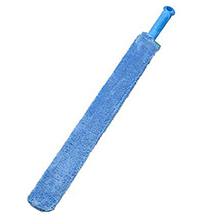Steam mop purchasing advice: how to choose the right product
- What You Need to Know
- A steam mop is ideal for cleaning various floors and windows.
- Cleaning with a steam mop is possible without chemical agents and is therefore environmentally friendly.
- A steam mop is available with either a power cable or a rechargeable battery.
- When buying a steam mop, pay particular attention to the power, the size of the water tank and the heating time.
- Usually, a steam mop has a power of between 1,200 and 1,600 watts, which is sufficient for most rooms.
Thorough floor cleaning thanks to steam
Whether you have a family with children, a household with animals or a single person: sooner or later, the floor of your own home will get dirty, which is why it needs regular cleaning. Brooms, hoovers or mops are usually used for this purpose. For quick and easy floor cleaning, however, a steam mop is more suitable. The handle of this device contains a water tank and a heating system that heats the water. The resulting steam escapes through a microfibre cloth attached to the end of the broom handle. Distributed on the floor, the steam loosens any dirt, which the microfibre cloth then catches.
Depending on the model, a steam mop is suitable for different types of floors and can also be used on sensitive materials such as wood or laminate on a low steam setting. Sometimes users can even use the steam mop to clean windows thanks to additional attachments.
Advantages of a steam mop
Although a steam mop is considerably more expensive than a cleaning cloth or a mop, the investment is worth it. After all, the cleaning process is not only much faster, but also less strenuous. For one thing, you don’t have to constantly dip the mop in water and wring it out. Secondly, thanks to the high performance of the steam mop, you can remove dirt without tedious scrubbing or scouring.
Since a steam mop binds the dirt, it does not spread around the room and further cleaning rounds are not necessary. Even hard-to-reach places are no problem for the small, little appliance. After cleaning, the floor dries quickly and no streaks remain. This efficiency even outweighs the higher weight that a steam mop brings with it.
Moreover, cleaning with a steam mop does not require any chemical cleaning agents. This is not only good for the environment, but also for the floor material, which is protected during the cleaning process.
Steam mop with or without cable
A steam mop is an electrical appliance and is therefore powered either by a rechargeable battery or a power cable. With a corded model, there must always be a socket nearby, which restricts the cleaning radius or at least makes it necessary to move the cord. The use of a model with a rechargeable battery is somewhat more flexible, but it must be recharged regularly. For cleaning small rooms, such a device is a good choice; for larger rooms, the cleaning process must be interrupted to charge the battery and thus takes longer than with a mains-operated device. Battery and corded models often differ in performance, but this is not the case with steam mops.
What to look for when buying a steam broom
If you are buying a steam mop, you should pay attention to some important aspects, such as the power, the size of the water tank and the steam regulation.
Power
Depending on the type of dirt the steam mop is supposed to remove, it needs a different power. As a rule, the power of a steam mop is between 1,200 and 1,600 watts, which is perfectly adequate for most types of dirt. For particularly smooth surfaces, you only need a model with a power of 1,200 watts. For stubborn dirt or carpet cleaning, on the other hand, the appliance should have a higher output. A model with a high output has two main advantages: firstly, it heats up more quickly and secondly, it enables higher steam temperatures.
Size of the water tank
The water tank is the most important component of the steam mop, because it holds the water needed for cleaning, which is converted into steam. The size of the tank depends on the model. The smallest water tanks only hold 100 millilitres and are only suitable for areas with a maximum of 40 square metres. Medium-sized tanks can hold between 250 and 500 millilitres of water and allow cleaning in 20 to 30 minutes for an area of 40 to 80 square metres with one tank filling. Larger tanks hold about one litre of water and are ideal for large rooms with an area of more than 80 square metres. Remember: The smaller the tank, the more often you have to refill it. However, a large tank also makes the unit heavier. Also make sure that the water tank can be removed. This means you don’t have to carry the water to the steam mop to fill it, but can simply hold the tank under the tap.
Steam regulation
To protect delicate floor materials such as wood or cork, you need a steam mop that allows you to reduce the steam output. For this purpose, some devices have a button that has to be pressed in order for steam to be emitted. As soon as the button is released, no more steam is emitted.
Ease of use
If you choose a model with a cord, make sure it has an automatic cord rewind. For battery models, a battery level indicator is practical to show how long the battery will last. For cleaning angled surfaces, the mop plate should be able to swivel 180 or even 360 degrees to be able to clean all areas. A larger mop plate, about 40 centimetres wide, is suitable for large areas, as they then become clean more quickly.
Child safety lock
Some appliances are equipped with a child safety lock that prevents steam from escaping or being triggered accidentally. If you live in a household with children, you should ideally choose a steam mop with this safety mechanism to protect your little ones from burns.
Steam temperature
The steam temperature tells you how hot the steam coming out of the steam mop can get. Most models have a maximum temperature of 100 degrees Celsius. This can be used to loosen almost all dirt. For particularly stubborn cases, there are also devices that can reach a steam temperature of up to 150 degrees Celsius. The steam temperature can usually be adjusted in stages using a regulator. For sensitive floors, a particularly low steam temperature is necessary to protect the material.
Heating time
How long the steam mop needs to be ready for use varies from model to model and also depends on the power. The shorter the heating time, the faster you can start cleaning. Most steam mops heat up within one minute. Particularly powerful devices can do it in 15 to 20 seconds. Steam mops with less power, on the other hand, usually need several minutes until the water is completely heated.
Power supply
If you buy a mains-operated steam mop, you should pay attention to the length of the cable. It is usually four to six metres long, which is sufficient for most medium-sized rooms. If you want to clean particularly large rooms with the device without having to move the cable, you should choose a model with a longer cable.
The capacity of a steam mop with a rechargeable battery is the decisive feature. The higher the battery capacity, the longer you can use the steam mop without having to charge the battery. Lithium-ion batteries are particularly high-quality and powerful and are therefore used in almost all devices.
Weight
The weight of a steam mop influences its handling. Most models weigh about three kilograms. A lightweight steam mop weighing less than three kilograms is recommended, especially for smaller or weaker users. A light weight is also practical if the appliance is to be transported to different rooms. However, if you need a model with a large water tank, you will have to accept a heavier steam mop.
Accessories
Some steam mops come with various nozzles and attachments. For example, a window cleaning attachment, crevice nozzle or window cleaning attachment may be included. Various microfibre cloths for replacement are included with many steam mops, but can also easily be purchased separately. Some models even come with anti-static dusting cloths that allow you to dust without steam.
What distinguishes a steam mop from other steam cleaners?
Depending on the type of floor to be cleaned, a different steam cleaner is the best choice. The steam mop is primarily intended as an alternative to the mop and is ideal for cleaning different types of floors such as tiles or carpet. A steam mop has more power and a larger water tank than a steam mop. However, such a hoover substitute is more expensive, bulkier and requires more electricity. For cleaning parquet floors, a steam mop is more suitable than a steam broom because it sucks in moisture and cleans the floor in this way, leaving no residue and being gentle on the floor.
Particularly large areas are best treated with a conventional steam cleaner. The large cleaning device is also ideal for the terrace. If you want a small steam cleaner, you can reach for the hand-held steam cleaner, also called a steam duck. It is the most compact steam cleaner and ideal for cleaning small areas. However, a steam duck is not suitable for cleaning larger areas, as it only has a low output and a very small water tank.
The correct use of the steam mop
Before you use the steam mop, you should take a closer look at the instructions for use. Among other things, it will say which floors your model is suitable for and which are not. Only use the appliance for the types of floor specified by the manufacturer. Since wood is particularly sensitive, you should only use a steam mop on unsealed wooden floors. Set the steam temperature or steam output to the lowest level and only dwell on the floor with the steam mop for a short time to avoid damaging it. The same applies to silicone joints so that the silicone does not come loose.
The water tank should never be filled to the top, otherwise more water than steam will come out when cleaning the floor. Due to the high temperatures, the water tank becomes very hot. Therefore, keep away from the tank during cleaning to prevent burns. If you have not used the steam mop for a long time, brown steam may come out when you use it again. However, this is harmless to your health and disappears after a short time. Regular use and cleaning of the steam mop will also prevent the discolouration of the water that causes the brown steam.
Cleaning and maintenance tips
The water tank of the steam mop should be decalcified every four weeks. To do this, simply pour vinegar or descaler into the tank and let it soak for 24 hours. After that, the water tank must be rinsed out several times with fresh water. You can also fill distilled water into your steam mop, which eliminates the cleaning step. Some steam mops are also equipped with a filter that makes descaling the water tank unnecessary. It is recommended to change the filter as soon as too much dirt has accumulated.
The mop cloth is usually attached to the steam mop by a Velcro fastener. This makes it easy to detach and clean in the washing machine at 60 degrees Celsius. However, as washability depends on the model, be sure to read the manufacturer’s instructions beforehand.
A dirty cloth will not clean properly, which is why you should replace it regularly. The anti-static dust cloths that are supplied with some appliances are usually only suitable for one-time use.

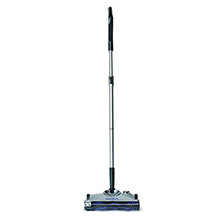
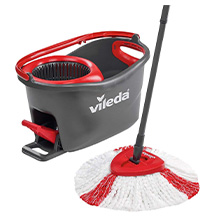
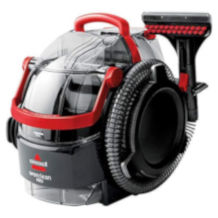
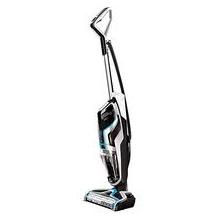
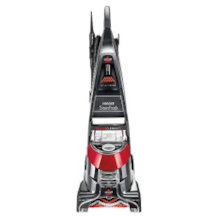
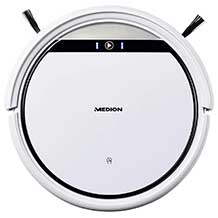
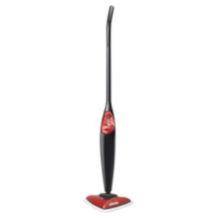

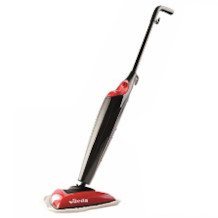
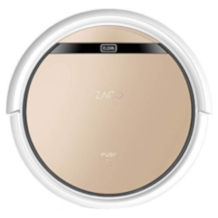

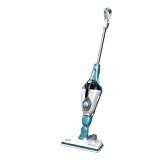

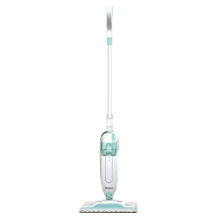


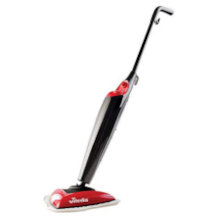

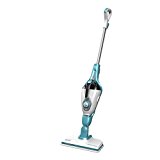
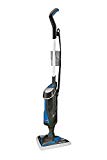
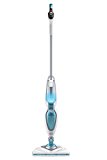

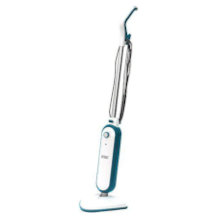

 20,696 reviews
20,696 reviews
